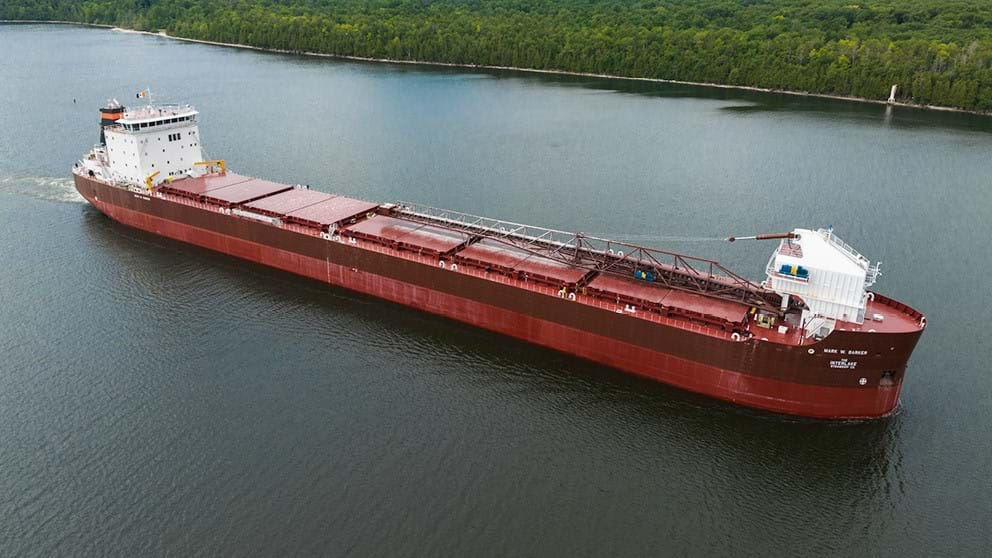
Interlake’s Mark W. Barker begins its journey as first new Great Lakes freighter in 39 years
Nearly three years after the initial cut of steel for the first Great Lakes freighter in almost four decades, the M/V Mark W. Barker set out on its first voyage July 27th from Fincantieri Bay Shipbuilding in Sturgeon Bay, Wisconsin.
“A monumental day for our company and the U.S.-flagged fleet as our much-anticipated freighter departed on the first voyage of what will be a long life of service on the Great Lakes,” says Mark W. Barker, President of The Interlake Steamship Company and namesake of the vessel – the company’s first new-build since 1981.
The M/V Mark W. Barker departed on a 110-mile (177-kilometre) journey to Port Inland, Michigan, where the crew of 21 professional mariners will load stone to deliver to Muskegon, Michigan.
At 639 feet (195 metres), the new vessel is the most versatile in Interlake’s fleet and strategically sized to navigate into nearly any port on the Great Lakes, giving the company a superior ability for cargo operations and to carry unique project cargoes because of both the square-shaped cargo hold and the larger hatch openings. Having the new vessel domestically manufactured (from domestically produced steel) resulted in a lower transport-related carbon footprint in addition to generating U.S. employment and economic benefits.
The Mark W. Barker will be the first ship on the Great Lakes with engines that meet EPA Tier 4 emissions standards. The vessel is equipped with two diesel fuel engines that reduce SOx and PM emissions and with selective catalytic reduction to lower NOx emissions. The vessel’s Hogner stern increases the propeller’s hydrodynamic efficiency which reduces fuel consumption. The ship has the capability to run on LNG when fueling infrastructure is available.
A controllable-pitch propeller along with a 1000-horsepower bow and stern thrusters negate the need for harbour assist tugs, further reducing overall fuel emissions for each docking. The Mark W. Barker was also pre-engineered for ballast water treatment system installation, and is equipped with a water-lubricated stern tube bearing to remove the possibility of related oil leaks.